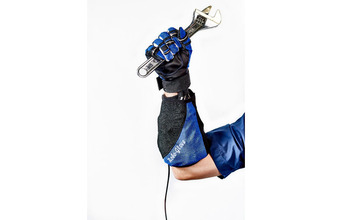
Robotic glove technology developed out of a partnership between General Motors and NASA for use on the International Space Station is also finding its application in the healthcare, manufacturing and other industrial applications though a licensing agreement between GM and Bioservo Technologies AB, a Swedish medical technology company.
Working with GM, Bioservo will combine technology from its SEM GloveTM (Soft Extra Muscle) technology with the RoboGlove, a force-multiplying battery-powered wearable developed by GM and NASA during a nine-year collaboration that included the launch of the humanoid robot called Robonaut 2 (R2) into space in 2011.
The RoboGlove uses leading-edge sensors, actuators and tendons that are comparable to the nerves, muscles and tendons in a human hand. One design requirement for R2 was to operate tools designed for humans, and developers achieved unprecedented hand dexterity. That technology was applied to the RoboGlove.
Bioservo will initially develop a new grasp assist device for industrial use that could increase human operator efficiency while reducing fatigue in hand muscles. Research shows fatigue can occur within a few minutes of continuously gripping a tool.
(Continued on next page)



























